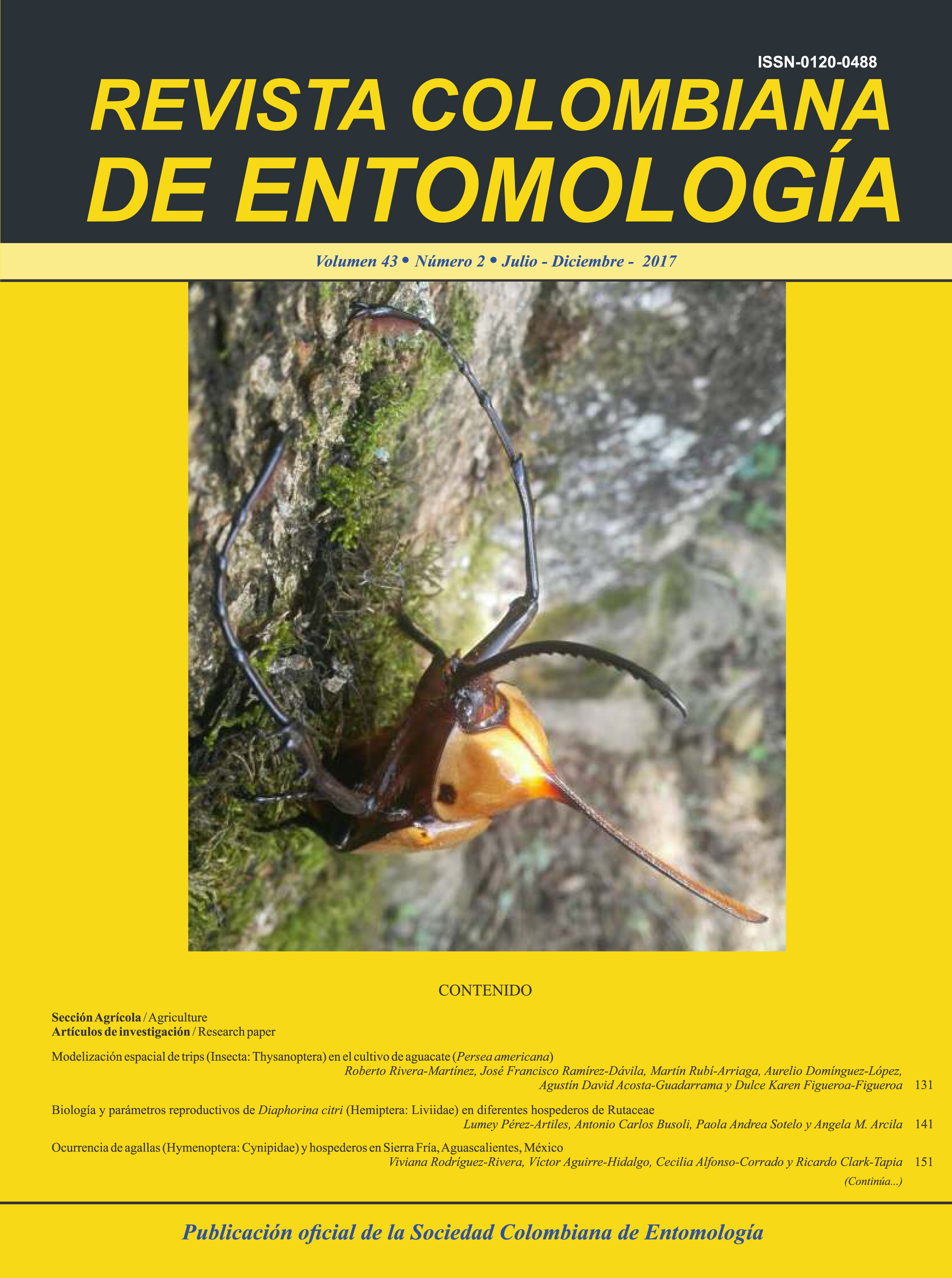Biology and reproductive parameters of Diaphorina citri (Hemiptera: Liviidae) in different Rutaceae hosts
Keywords:
Citrus sinensis, citrus pests, huanglongbing, asian citrus psyllid, life tableMain Article Content
This work aimed to study the biology and population parameters of Diaphorina citri in Rangpur and
Citrumelo ‘Swingle’ rootstocks and in their combinations with orange scions in Araraquara, Sao Pablo. For the maintenance of a D. citri breeding stock, plants of Murraya exotica L. were used. In each treatment the duration of the biological stages of the pest, viability of the eggs, survival of egg to adult and sexual ratio were evaluated. Egg to adult development time ranged from 15.08 days in Pera / Rangpur to 16.5 days in Hamilim / Citrumelo ‘Swingle’. The highest viability of eggs (82.02 %) of D. citri was observed in the Valencia / Rangpur combination and the lowest in Hamilim / Citrumelo ‘Swingle’ (73.66 %). The egg-adult survival values ranged from 56.16 to 71.07 %, obtaining the lowest survival values in the Hamilim / Citrumelo ‘Swingle’ combination. The lowest mean oviposition (eggs for female) was observed in Citrumelo ‘Swingle’ (185.10). Based on the fertility chart, Rangpur had the highest net reproductive rate (Ro = 160.57) and the shortest generation time (31.54 days). The intrinsic growth rate was higher in the Valencia/Rangpur combination (0.1517). A positive and significant correlation was found between total oviposition and female
longevity (R = 0.23440; P = 0.03649) and between the former variable and duration of oviposition period (0.39011, P = 0.0003). Citrumelo ‘Swingle’ and Hamilim / Citrumelo ‘Swingle’ were the treatments that most negatively affected the biological parameters studied mainly oviposition and survival.
Downloads

This work is licensed under a Creative Commons Attribution-NonCommercial-ShareAlike 4.0 International License.
Authors retain the copyright on their work and are responsible for the ideas expressed in them. Once a manuscript is approved for publication, authors are asked for a publication license for the term of legal protection, for all territories that allows the use, dissemination and disclosure of the same.

